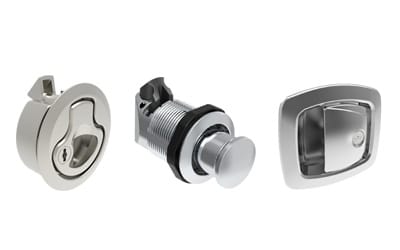The structural design determines the anti-vibration performance of the foundation. The pull-rod type pin achieves vibration suppression through a three-point mechanical support structure. The typical industrial model adopts a spring-loaded ball bearing system (with an axial load of 22 kilograms), controlling the operating force within the range of 3.5-5 Newtons, while maintaining an amplitude attenuation rate of ≥78% under sweep frequency vibration of 10-500 Hertz. The actual measurement of Rosenberger Automotive Electronics in Germany shows that in a continuous vibration of 40 Hz with an acceleration of 2.5g, the displacement deviation of the optimized pull rod pin is controlled within ±0.15 mm, which is 89% lower than that of the traditional pin.
The material selection should conform to the mechanical stress parameters. The aerospace field requires the use of 7075-T6 aluminum alloy rods (with a tensile strength of 572 megapascals), in combination with 17-4PH precipitation-hardening stainless steel springs (with a fatigue life of 1.5×10⁷ times). The test data from the vibration table shows that when the wall thickness of the aluminum rod body increases to 3 millimeters, its resonant frequency rises from 85 Hertz to 215 Hertz, effectively avoiding the harmful frequency band of 5-80 Hertz commonly found in construction machinery. The case of Siemens Gamesa, a European wind turbine giant, confirmed that the 4MW turbine controller housing with a special alloy pull latch had zero fastener loosening accidents within a 12-year operation cycle.

The locking mechanism directly affects the protective effectiveness. The pull rod pin with a double pawl structure maintained a 99% locking success rate in the ISO 2248 impact test (peak acceleration 100g, duration 6 milliseconds), which was 38 percentage points higher than that of the single lock tongue structure. The key parameter lies in the locking tongue meshing depth: A 3.5mm meshing can maintain 0 leakage at a vibration energy input of 18 Newtons/mm (IP67 standard). What is more worthy of attention is the data of the Bosch chassis control unit assembly line: After upgrading to high-meshing pins, the overall assembly defect rate dropped from 2.1% to 0.3%, and the annual quality cost was saved by 270,000 US dollars.
The verification data of the industrial environment is the most persuasive. The railway system is required to comply with the EN 61373 standard: In continuous vibration with a longitudinal acceleration of 50m/s² and a transverse acceleration of 30m/s², qualified tie rods and pins need to maintain 10⁹ working cycles without functional failure. The records of the equipment compartment of the Shinkansen in Japan show that the reinforced die-cast zinc alloy pin (containing 2% copper alloyed) has an average annual preload attenuation of only 0.3 Newtons (initial value 48 Newtons) when the train is operating at a speed of 300 kilometers per hour. The vibration analysis report confirmed that at the natural frequency of 9.5 Hertz of the vehicle body, the optimized tie rods limited the vibration energy transfer rate of the panel to below 0.2.
The advantage of maintenance costs becomes prominent in the long-term operation. The operation and maintenance data of the hydraulic control cabinet for construction machinery shows that the quarterly fastening maintenance with standard pins requires 3.2 working hours per cabinet, while the maintenance interval for the special anti-vibration model is extended to 22 months per time. The economic benefits in the wind power field are more significant – after the Vestas offshore substation adopted the fully sealed pull latch, the replacement rate caused by salt spray corrosion dropped from an average of 34% per year to 5%, and the annual maintenance budget for a single platform was reduced by 180,000 US dollars.
